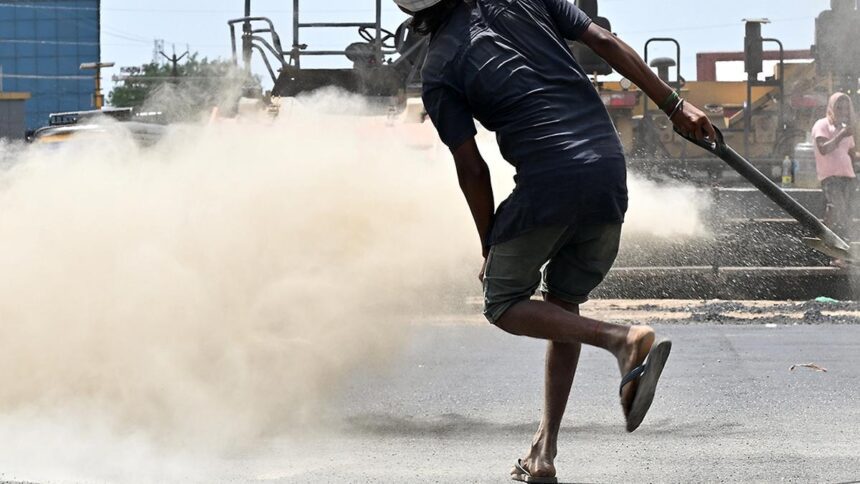Recently, the government of Tamil Nadu issued a gazette notification classifying heatwaves as a state disaster, joining 13 other events which include fatalities from electrocution, thunderstorms, floods, and snakebites. Families of individuals, including relief workers who succumbed to heatwaves, will be entitled to an ex-gratia payment of ₹ 4 lakh.
This move is significant, as it places greater responsibility on the State Government to implement measures aimed at lowering heatwave-related fatalities within the state (it should be noted that heatwaves have not yet been recognized as a disaster at the national level in current disaster relief protocols).
Anup Kumar Srivastava, a former senior consultant at the National Disaster Management Authority (NDMA), emphasizes that the key pillars of disaster management involve prevention, preparedness, mitigation, monitoring, and relief, in that order.
“The next course of action for the Government should involve focusing on capacity building, which needs to be an ongoing and continuous effort,” states Srivastava.
Healthcare professionals and administrative personnel ought to be trained to recognize the signs and symptoms of heatwaves in patients and the public. He advocates for a robust heatwave action plan that designates nodal officers in every district to oversee initiatives and their monitoring.
While most notifications highlight the importance of distributing ORS packets, establishing drinking water stations in public areas, and adjusting working hours to shield outdoor laborers, governments must extend their focus beyond these basic measures.
“Compensation for agricultural losses and the deaths of livestock should also be factored in,” asserts Srivastava.
Mihir R. Bhatt, Director of the All India Disaster Mitigation Institute based in Ahmedabad, points out that this notification reflects the state government’s commitment and will aid its citizens both legally and financially.
Preventing extreme heat-related deaths is achievable; therefore, proactive steps must be implemented at both the district and city levels, alongside heat action plans. Other initiatives could include heat protection strategies, cooling projects, and insurance coverage for individuals and businesses. “Involving communities and fostering grassroots planning will empower vulnerable populations,” notes Bhatt, who served as the coordinating lead author for the IPCC Special Report on Extreme Events.
He further mentions that heatwave preparedness should take place not only during heatwaves but also during periods without them. “It shouldn’t be limited to heatwave occurrences,” he remarks.
Bhatt explains that the mechanisms for compensation can differ based on various contexts and circumstances, highlighting the importance of analyzing heatwave-related payments across different states.
Identifying heatwave-related fatalities poses challenges due to varying definitions of heatwaves, the presence of co-morbid conditions in individuals, and the absence of clinical tests to confirm heat-induced deaths.
Typically, medical professionals document only the immediate cause of death, overlooking environmental factors such as heat. Physicians classify heat-related fatalities as exertional or non-exertional.
“Heatwaves exist along a spectrum, and it’s hard to determine whether they were the sole cause of death or if there were pre-existing conditions. There are no laboratory tests that can definitively indicate that heat was the cause,” explains a senior doctor.
While the National Disaster Management Authority has issued guidelines for identifying heatwave deaths, doctors highlight the necessity for further sensitization. “It’s essential for clinicians to adapt their treatment approaches and recognize heatwave-related conditions early,” says the physician.
Despite the existence of medical guidelines intended to assist doctors in confirming or disqualifying suspected heatwave illnesses, both training and heightened awareness are crucial.
“Autopsy Findings in Heat Related Deaths,” developed under the National Programme on Climate Change and Human Health by the National Centre for Disease Control, Ministry of Health and Family Welfare, underscores the importance of developing guidance for identifying and categorizing heat-related deaths.
“We want thermal discomfort to be recognized as a disease,” G. Sundarrajan member of Tamil Nadu Governing Council on Climate Change
In certain states offering compensation to heatwave victims, the official process for certifying a heatwave-related death is so complicated that even legitimate cases can be difficult to establish.
As per the Indian Meteorological Department (IMD), a heatwave should be declared when the actual maximum temperature exceeds 45°C, regardless of the normal maximum temperature, though this definition varies in coastal areas.
“We desire that thermal discomfort be acknowledged as a disease,” states G. Sundarrajan, coordinator with Poovulagin Nanbargal and a member of the Tamil Nadu Governing Council on Climate Change.
The environmental organization has been collaborating with the government, expressing concerns that doctors rarely categorize a death as heat-induced. “Unless the state officially recognizes heat or thermal discomfort as a disease, individuals will not qualify for this ex-gratia payment,” Sundarrajan emphasizes, urging the state health department to clarify the process.
Regarding the inconsistent definitions of heatwave, Sundarrajan argues that temperature alone cannot define heatwaves, particularly in humid cities like Chennai.
“The Indian Meteorological Department should also factor in the heat index, which accounts for relative humidity in addition to just the temperature readings,” he states, mentioning that Poovulagin Nanbargal has reached out to the state government on this point and is organizing meetings with various stakeholders.
Published – November 18, 2024 04:25 pm IST










